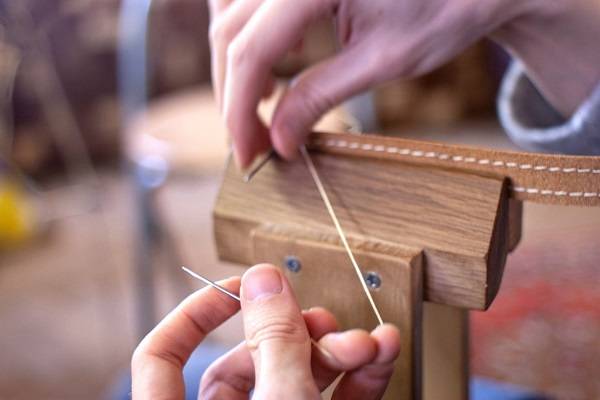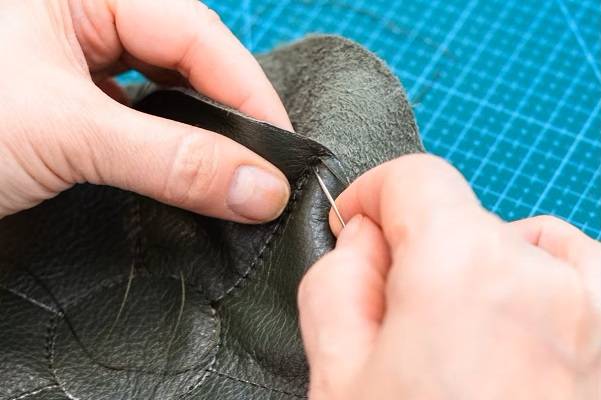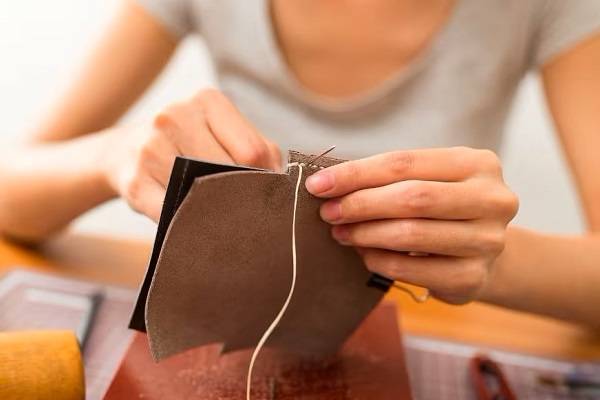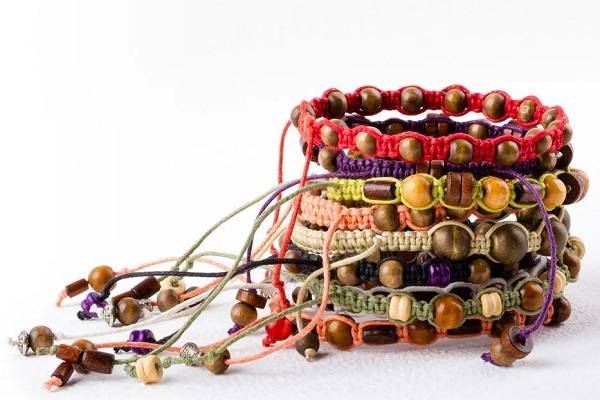Waxed vs. Non-Waxed Thread: A Definite Guide for Handcrafters & Artisans
Learn More About Wax Coating So You Know The Difference Between Treated And Untreated Thread

Innovation & Quality
Developing and supplying premium-quality, sustainably grown, consumer products
100% Natural
Organically Grown and Ethically Sourced
hemp and other natural fiber products
Shipping
We offer fast shipping
Your order out within 1-3 days
Wholesale
Visit our wholesale portal to register or login to your account
Shop Premium Threads For Small Scale & Large Scale DIY Projects at Hemptique
What Is The Purpose Of Applying Wax To Crafting Thread?
The History of Waxed Thread
Waxed vs. Non-Waxed Thread: The Differences That Impact Fiber’s Features
Handling - A thin layer of coating reduces fraying and friction while stitching or sewing through materials. It enables easier gliding through all kinds of fabrics, even stiffer and denser ones, like denim or heavy-duty canvas. It is also less likely to tangle or to knot.
- Durability - If you are working on a craft that requires strength and durability, such as camping gear repair or marine upholstery, opt for the treated fiber. An extra coating increases strength and resistance to breakage. Without conditioning, the string will not be able to withstand high tension, continuous wear and tear, and environmental influence for long.
- Flexibility – When it comes to flexibility, unwaxed string is a better choice. Without additional weight of wax, the fiber has fluid movement and is more appropriate for crafts such as macrame, crocheting, lacing, etc.
- Tangling – When waxed, thread tends to tangle less as the fibers are holding firmly together.
- Appearance – The wax gives a slightly glossy appearance to the fiber, which is why it is typically used for leather crafts. Non-waxed thread, on the other hand, has natural matte finish, and is preferred for crafting organic, rustic-looking items that are less shiny, such as this gorgeous DIY macrame garland.

Types Of Wax
Beeswax
Synthetic
Vegan (Soy, Candelilla, Carnauba)
Soy wax is plant-based. It is made from soybeans, which are similar to beeswax.
- Candelilla wax is made by processing the leaves of Candelilla shrub and gives a glossy appearance to your handicrafts.
- Carnauba wax is made from the leaves of Carnauba palm. It’s another type that helps reduce carbon footprint while being ecologically acceptable material.
Natural Vs. Synthetic Wax: Which One To Use?
Natural waxes pros:
Eco-Friendliness & biodegradability - They have significantly lower environmental impact.
- Versatility – They can be used for various crafts and projects, from jewelry making to outdoor furniture upholstery.
- Ethically sourced – They appeal to crafters seeking vegan, cruelty-free products.
Natural waxes cons:
Affordability – Organic, eco-friendly options tend to be higher priced than synthetic ones. r custom text goes here
Allergic reactions - In extremely rare cases, it may cause allergic reactions.
Synthetic wax pros:
Uniformity - Synthetic wax ensures uniform, even texture and consistency and can safely be used for crafts that require precision and clean stitches.
Water resistance - Superior moisture resistance allows for application in a wide variety of projects, including marine settings.
Synthetic Wax cons:
- Environmentally harmful - Since it is made using petroleum, it is not biodegradable and may have damaging environmental impact.
Less common - Synthetic silicone lubricants are less popular and harder to find. ustom text goes here
Advantages & Disadvantages of Waxed Threads
Advantages
- Less friction - It lowers the risk of tearing the fabric and allows it to pass seamlessly through all kinds of materials, including thicker ones like leather or marine canvas.
- Better hold – Lubricated fibers have firmer hold and easily grab hold of paper or other materials and stay in place.
- Increased strength – Another benefit is increased strength that enables the thread to withstand high tension for prolonged periods of time. This is vital for crafts such as shoe repair or bookbinding.
- Less fraying – Fiber becomes resistant to fraying, while stitches stay secure over a long period of time.
- More control - It helps crafters accomplish precise stitching, which is essential in quilting or embroidery projects.
Disadvantages
- Reduced flexibility - This can be a disadvantage in crafts that call for fluidity of movement, such as drapery making.
- Excess residue – Some types of lubricants may leave residue on materials or on your hands. Although minimal, it can still pose a problem in projects where precision and cleanliness are critical.
- Limited color options – Color range is generally smaller and the colors become less vibrant.
Choosing The Perfect Wax For Your DIY Craft
Environmental aspect - If earth friendliness is vital, opt for naturally sourced materials, such as beeswax, soy, Carnauba, rice bran, or Candelilla.
- Project requirements – Think of your crafts requirements and whether it’s an outdoor or indoor item you’re making. Ask yourself if it will be exposed to a lot of heat or moisture and whether it will be under a lot of tension. Will you be stitching and sewing leather? Answers to these questions will help you determine which type is perfect for your needs.
- Look & feel - In the end, your choice may be based on your personal preferences, such as the smell, look, and feel of the wax. Natural options are preferred among crafters for their pleasant smell and better tactile quality.
Uses
- Macramé – For projects that require secure knotting, such as macrame and weaving, the treated thread is preferred as it helps keep the knots secure and tight. It also prevents them from loosening over time, which means that the end product will preserve its shape, size, and design over time.
- Quilting – It helps the thread glide smoothly through multiple layers. At the same time, it reduces tangling, knotting and creates even stitches.
- Jewelry making - It helps secure small beads to stay in place and adds strength to these delicate jewelry pieces.
- Leatherwork – Since these types of crafts require strength and durability, it is imperative to use lubricated fiber that will ensure clean, tight stitches that will hold up daily use. Whether you are crafting a leather wallet, a belt, knife sheaths, boots, a saddle, or a bag, make sure you condition the string you’ll use.
- Bookbinding – A coating of wax can also be used in bookbinding, especially for Coptic bindings and books with exposed spine. It adds strength and ensures better grip, allowing bookbinders to work faster. The end result is a book that will last through generations.
- Outdoor gear repair – When you are working on outdoor or sports equipment repair, you must make sure the supplies are resistant to moisture and durable. Conditioned thread is perfect for repair of items such as awnings, tents, tarps, backpacks, boat sails, outdoor trellises, umbrellas, and so on.
- Embroidery – Conditioning facilitates smoother and cleaner embroidering on heavier fabrics.
- Other applications - making or repair of bagpipe reeds, basket weaving, beading, braided rugs, convertible tops, DIY dream catchers, model ships, friendship bracelets, rosaries, wicker furniture, wreaths, and so many more.

How To Apply Wax?
- Step 1 - Measure and cut the length of thread you need.
- Step 2 - Take wax box (or block) and run the string across its surface. Cover the entire length. Repeat the process if necessary to ensure even coating.
- Step 3 – The last step involves removing excess product. Simply run the thread through your fingers (or a piece of cloth) to smooth it out and get even coating.







